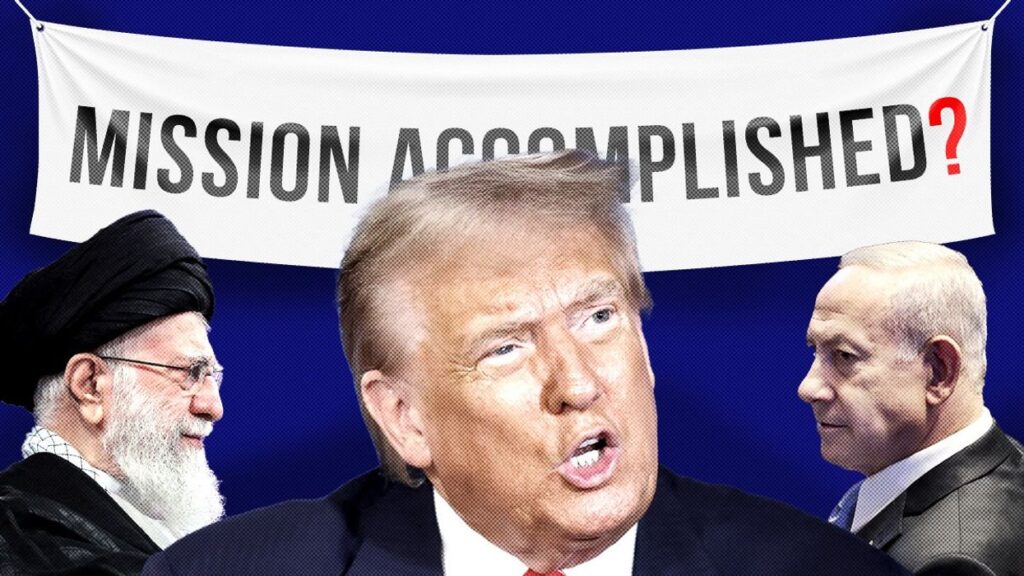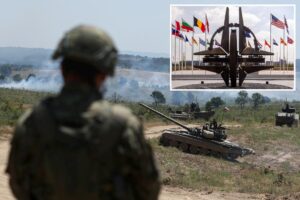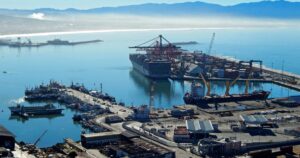
WASHINGTON, D.C. – In a decisive move, the United States launched airstrikes on Iran’s fortified nuclear sites over the weekend, marking a significant escalation in the ongoing conflict between Israel and Iran.
Immediate Impact of U.S. Airstrikes
President Donald Trump characterized the strikes on Fordow, Natanz, and Isfahan as a “one-and-done” operation, aimed at supporting Israel without entangling the U.S. in a prolonged conflict. The decision aligns with Trump’s preference for quick, decisive actions that resonate with his political base.
Iran’s Calculated Response
On Monday, Iran launched a symbolic missile attack on Al Udeid Air Base in Qatar, the largest U.S. military installation in the region. Tehran’s advance warning to the U.S. via Qatar ensured no casualties, allowing both sides to save face without escalating the conflict further.
Tehran’s missile salvo was a performative gesture intended to demonstrate retaliation while minimizing actual damage.
Key Details Emerge
This latest episode mirrors a similar pattern from the end of Trump’s first term when Iran responded to the assassination of General Qassem Soleimani with a low-impact missile strike. Both sides declared victory, and tensions subsided.
Trump’s Ceasefire Announcement
Following Iran’s attack, Trump declared a “Complete and Total CEASEFIRE” between Iran and Israel, labeling the brief conflict the “12 Day War.” Despite a near-immediate violation by both Iran and Israel, Trump pressured Israeli Prime Minister Benjamin Netanyahu to de-escalate, showcasing a rare public reprimand of a close ally.
“CONGRATULATIONS WORLD, IT’S TIME FOR PEACE!” Trump announced, aiming to solidify his diplomatic achievement.
By the Numbers
- 10,000 U.S. troops stationed at Al Udeid Air Base
- 400-kilogram stockpile of Iran’s highly-enriched uranium
- 12 days of conflict dubbed the “12 Day War”
What Comes Next
The ceasefire, though fragile, provides Iran with a strategic pause to recalibrate its internal security and nuclear ambitions. Experts suggest that Iran, despite its weakened state, remains focused on regime survival rather than military victory.
Expert Analysis
According to defense analysts, the U.S. strikes have set back Iran’s nuclear program by a few months to two years. However, there is skepticism about the long-term efficacy of military action as a deterrent.
“The military option was never a permanent solution to Iran’s nuclear ambitions,” experts warn.
Background Context
Trump’s decision to strike was influenced by Israel’s aggressive stance and Iran’s ongoing nuclear activities. The president’s reluctance to engage in prolonged military commitments underscores his focus on short-term victories and political optics.
Regional Implications
Netanyahu’s strategic gains have strengthened his domestic position, while Iran’s vulnerabilities have been laid bare. The regional power dynamics continue to evolve, with Israel maintaining a watchful stance on Iran’s nuclear developments.
Timeline of Events
- Saturday: U.S. strikes on Iranian nuclear sites
- Monday: Iran’s missile attack on Al Udeid Air Base
- Tuesday: Ceasefire announcement and subsequent violations
Future Implications
As the ceasefire holds, albeit tenuously, the broader geopolitical landscape remains uncertain. Trump’s diplomatic gamble may yield short-term peace, but the underlying tensions and nuclear aspirations persist.
The 12-Day War may have ended, but the potential for future conflict looms as Iran seeks to rebuild its capabilities and Israel remains vigilant.




